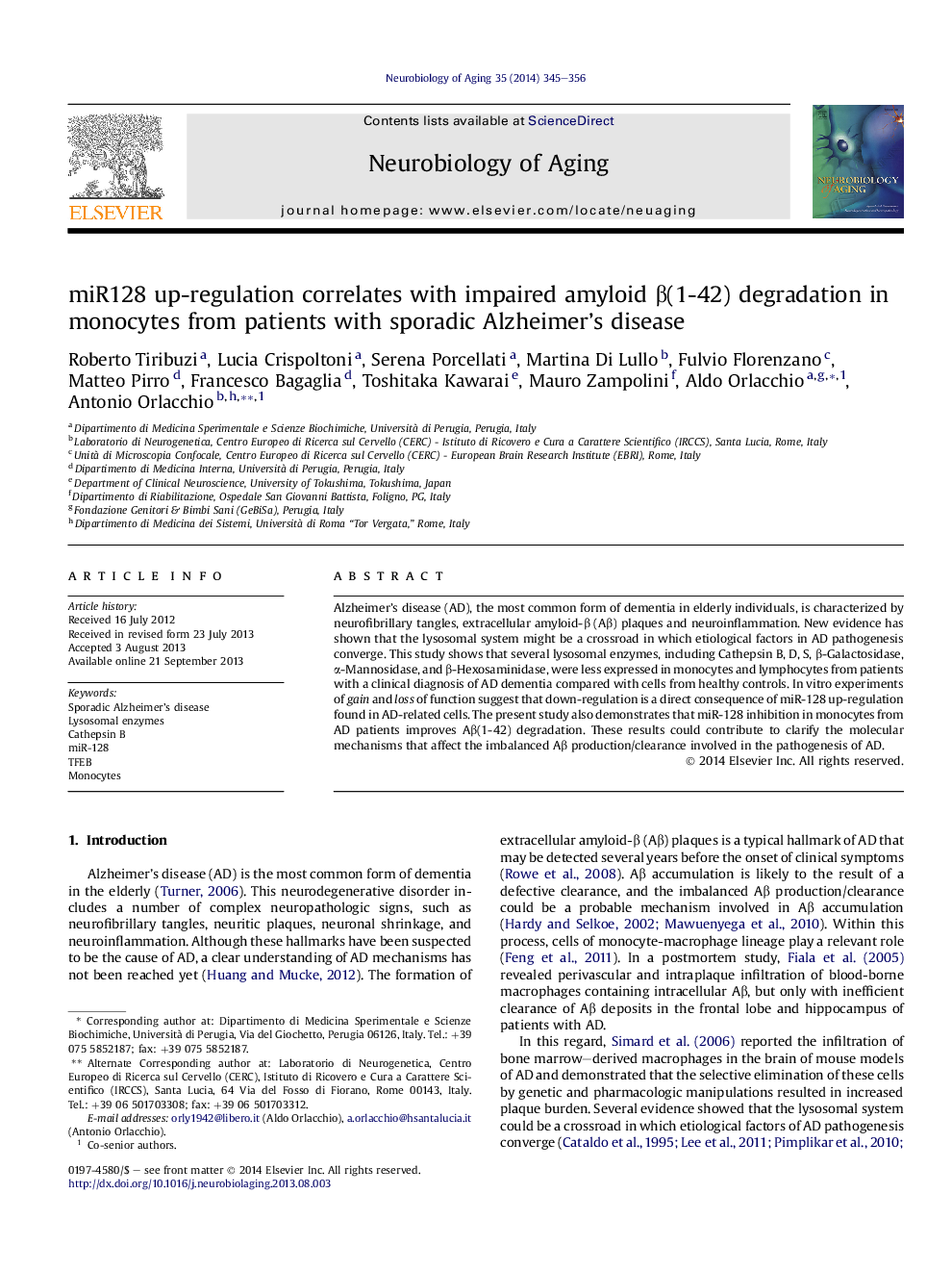| Article ID | Journal | Published Year | Pages | File Type |
|---|---|---|---|---|
| 6806372 | Neurobiology of Aging | 2014 | 12 Pages |
Abstract
Alzheimer's disease (AD), the most common form of dementia in elderly individuals, is characterized by neurofibrillary tangles, extracellular amyloid-β (Aβ) plaques and neuroinflammation. New evidence has shown that the lysosomal system might be a crossroad in which etiological factors in AD pathogenesis converge. This study shows that several lysosomal enzymes, including Cathepsin B, D, S, β-Galactosidase, α-Mannosidase, and β-Hexosaminidase, were less expressed in monocytes and lymphocytes from patients with a clinical diagnosis of AD dementia compared with cells from healthy controls. In vitro experiments of gain and loss of function suggest that down-regulation is a direct consequence of miR-128 up-regulation found in AD-related cells. The present study also demonstrates that miR-128 inhibition in monocytes from AD patients improves Aβ(1-42) degradation. These results could contribute to clarify the molecular mechanisms that affect the imbalanced Aβ production/clearance involved in the pathogenesis of AD.
Related Topics
Life Sciences
Biochemistry, Genetics and Molecular Biology
Ageing
Authors
Roberto Tiribuzi, Lucia Crispoltoni, Serena Porcellati, Martina Di Lullo, Fulvio Florenzano, Matteo Pirro, Francesco Bagaglia, Toshitaka Kawarai, Mauro Zampolini, Aldo Orlacchio, Antonio Orlacchio,
